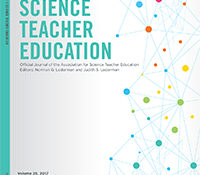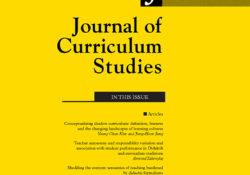tandfonline.com har udgivet en rapport under søgningen “Teacher Education Mathematics”: ABSTRACT ABSTRACT Over the last decade the governance of primary and secondary schools in the Netherlands has by no means become simpler. This paper sketches recent policy developments and their consequences for the leadership of Boards of Multiple Schools (BMSs) and their school leaders. Thereof we describe the challenges BMSs in the Netherlands currently face to enhance educational quality. However, the existence of a wide variety of school board types and a lack of research into BMSs prevent a solid evidence base on how the leadership of school boards contributes to improving the quality of education in the schools they run. As the interaction between school leaders and boards is understudied we make a plea for a research agenda that… Continue Reading →
Like this:
Like Loading...

tandfonline.com har udgivet en rapport under søgningen “Teacher Education Mathematics”: ABSTRACT ABSTRACT Science teachers should be able to notice student preconceptions in order to adapt instructions to their students’ needs and support the learning process. Noticing as a core practice of teaching should thus be implemented early in science teacher education. A crucial prerequisite for noticing is knowledge about students’ preconceptions, which is an important element of science teachers’ pedagogical content knowledge. To enhance pre-service teachers’ pedagogical content knowledge, flipped classroom approaches seem especially promising as they combine a theoretical introduction to important didactic concepts with a direct application of these concepts in profession-oriented learning tasks. Furthermore, flipped classrooms seem to satisfy the three basic personal needs of experience in competence, social relatedness, and autonomy according to the self-determination theory… Continue Reading →
Like this:
Like Loading...
eric.ed.gov har udgivet: The intent of this qualitative study was to examine pre-service teachers’ growing awareness of the role dispositions and autonomy play in the classroom and the implications these constructs have for teaching and learning. Teacher candidates’ written reflections and focus group statements revealed three robust emergent themes: engagement, empowerment, and meaning making. When taking a wide lens view, these robust emergent themes nurtured certain dispositions, autonomy, and teaching efficacy. Teaching strategies such as the project approach (adult-oriented and with children) and the construction of math games were considered valuable assignments that strengthened a variety of dispositions by providing on-going opportunities for teacher candidates to engage in experiences that promoted autonomous thinking and actions during their preparation program. Teaching efficacy emerged as a related construct and became an integral… Continue Reading →
Like this:
Like Loading...
tandfonline.com har udgivet en rapport under søgningen “Teacher Education Mathematics”: “Use what you have to secure what you have not”. On Design for and from Autonomy Link til kilde
Like this:
Like Loading...
eric.ed.gov har udgivet: The interaction between types of communication and socio-mathematical norms on students’ learning autonomy in five curriculum programs was investigated. Uni-directional, contributive, reflective, and instructive types of communications were present in curriculum programs studied. Investigations in Number Data and Space and Math Trailblazers provided opportunities for students to explain, justify, and compare solution strategies. Math in Focus and Scott Foresman Addison Wesley-Mathematics required explanations, justifications, and comparisons of solution strategies, but those were mainly provided by the teacher. The former and latter programs potentially foster intellectual autonomous and intellectual heteronomous learning in students, respectively, while Everyday Mathematics almost equally supports both. [For the complete proceedings, see ED583989.] Link til kilde
Like this:
Like Loading...
tandfonline.com har udgivet en rapport under søgningen “Teacher Education Mathematics”: ABSTRACT Formulae display:?Mathematical formulae have been encoded as MathML and are displayed in this HTML version using MathJax in order to improve their display. Uncheck the box to turn MathJax off. This feature requires Javascript. Click on a formula to zoom. ABSTRACT The primary objective of the study was to empirically test theoretical claims made about differences between Didaktik and curriculum traditions concerning teacher autonomy (TA) and teacher responsibility (TR). It tests the hypothesis that TA and TR are higher among Didaktik than curriculum countries. The second objective was to explore associations of TA and responsibility measures with students’ science performance? Nationally representative data from 2009 Programme for International Student Assessment (PISA), collected through a two-step random selection process were… Continue Reading →
Like this:
Like Loading...
tandfonline.com har udgivet en rapport under søgningen “Teacher Education Mathematics”: Abstract Abstract Facing increased calls for “practical skills,” the arts and humanities are under immense pressure to demonstrate their value to a public that demands measurable metrics. As a response, graphic design has adopted the language of “research” as a way to engage with tangible benefits. Research, in turn, has emphasized applied learning and the field of engineering has been suggested by some as a possible model for graphic design education. This paper instead proposes architecture as a more aligned disciplinary model for education, practice, and research. During the late 1960s and early 1970s, architecture faced a crisis very similar to the one affecting graphic design today. But rather than relinquish disciplinary control to the positivist scientism of behavioral science,… Continue Reading →
Like this:
Like Loading...




